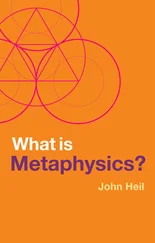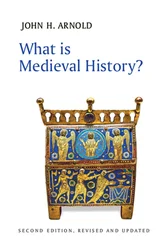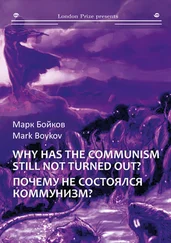A proposed Handprinter mobile app would allow you “to interpret your positive impacts in terms of the number of hours or days in which you are living net-positively; use your phone to see the actions other users are taking; you and your friends will be able to keep track of the impact you’re having as a group . What’s the total collective handprint of your family, neighborhood or school.”
Not so long ago, I browsed an upscale magazine that touts life’s luxuries. The Christmas issue featured twenty-one “ultimate gifts,” including a personally designed fountain pen for $275,000 and a custom-built backyard theme park, including a full-size steel roller coaster, for $20 million plus upkeep. The same week saw the failure of Handprinter to raise funds for that mobile app on the Web site Kickstarter. Price: $30,000.
Albert Einstein once said, “With the unleashed power of the atom everything has changed, save our modes of thinking, and thus we drift towards unparalleled catastrophe.” Effective worrying focuses our attention on a genuine threat and leads to anticipating solutions and implementing them. Neurotic worrying just loops into repetitive angst. I’ll dial down my worry the day Handprinter not only gets funded but goes viral—and that backyard theme park gets recycled.
JENNIFER JACQUET
Clinical assistant professor of environmental studies, NYU; researcher, cooperation & the tragedy of the commons
Humans are today something we have never been before, a global geological force. This epoch, which begins around 1800, has been called the Anthropocene and is characterized by steep line graphs that look like Mount Everest sliced in half: human population, water use, biodiversity loss, nitrogen runoff, atmospheric carbon dioxide, and so forth.
The data irrefutably establish humans as the dominant driver of environmental change, which is something that should worry us all. But we should also be worried that framing humans as the dominant driver of change will lead to further negative change, which I am calling the anthropocebo effect.
The effects of cultural framing are everywhere. The placebo effect—experiencing positive effects from an inert pill—occurs only in cultures that believe taking a pill can cure an illness. The even stranger nocebo effect, whereby just mentioning side effects makes them more likely to occur, shows us the power of mind. The anthropocebo effect, then, is a psychological condition that exacerbates human-induced damage—a certain pessimism that makes us accept human destruction as inevitable.
Science helps shape how we see ourselves. Words also matter for perception, and perception matters for behavior. Consider what the theory of natural selection did to our view of humans in the biological world. We should be worried about the new epoch, the Anthropocene—not only as a geological phenomenon but also as a cultural frame.
THE RELATIVE OBSCURITY OF THE WRITINGS OF ÉDOUARD GLISSANT
HANS ULRICH OBRIST
Curator, Serpentine Gallery, London; editor, A Brief History of Curating ; coauthor (with Rem Koolhaas), Project Japan: Metabolism Talks
Although he is not widely known, Édouard Glissant (1928-2011) is one of the most important 20th-century writers whose thinking remains fundamental for the 21st century. I believe we should be worried about his relative obscurity, since he discusses with great insight what seem to me to be the most important issues surrounding globalization: homogenization and extinction. His theory of the “creolization of the world” pertains to questions of national identity in view of the colonial past that characterizes his Antillean identity. He broaches the urgent questions of how best to escape the threat of cultural homogenization and how we can work to sustain the positive force of creolization—a plurality of cultures—within the terms of an ongoing global exchange.
Global homogenization is a tendency that Stefan Zweig had already observed in 1925, when he wrote, in Die Monotonisierung der Welt ( The Monotonization of the World ):
Everything concerning the outer life-form becomes homogeneous; everything is evened to a consistent cultural scheme. More and more countries seem to be congruent, people acting and living within one scheme, more and more cities becoming similar in their outer appearance…. More and more the aroma of the specific seems to evaporate.
The forces of globalization are affecting the world of art at large and exhibition-curating specifically. There has been great potential in the new global dialogs of the last couple of decades, some of it realized, but there has also been the persistent danger that the homogenizing influences of globalization will make differences disappear. I worry about this, and so I read Glissant every morning when I wake up. He anchors my thoughts regarding producing shows internationally—encouraging me to listen to and learn from whatever culture I may be working within. Since time is losing its local variety to a global speed that leaves no room for individual pace, to curate time, and to locate forms of resistance to the homogenization of time, has become as important as curating and resisting the homogenization of space.
Cultural homogenization is nothing less than cultural extinction. As the art historian Horst Bredekamp writes in his book Theorie des Bildakts ( Theory of Picture Acts ), in today’s globalized war, iconoclastic acts have become a prominent strategy—the public extinction of monuments and cultural symbols, such as the destruction of the Bamiyan Buddha statues in Afghanistan by the Taliban. Through the mass media, war thus becomes a globalized image-war that crosses the borders of territories and persists after the event, functioning as legitimation for military action and diplomatic policy.
Scientists increasingly debate the possibility of the extinction of human civilization and even of the species itself. The astronomer Martin Rees talks about “Our Final Hour” and questions whether civilization will survive beyond the next century. The spectre of extinction is felt across the humanities, too. For philosopher Ray Brassier, the inevitable fact of our eventual extinction grounds the ultimate meaninglessness of human existence, and thus for him the only proper response for philosophy is to embrace and pursue the radically nihilistic implications of this most basic insight. As he writes in Nihil Unbound (2007): “[N]ihilism is… the unavoidable corollary of the realist conviction that there is a mind-independent reality which… is indifferent to our existence and oblivious to the values and meanings which we would drape over it in order to make it more hospitable.”
Most would stop short of this absolute nihilism, and there are of course other places to look—sources of hope and meaning. The artist Gustav Metzger, for instance, has made extinction a central theme of his practice. In works that make use of his enormous archive of newspapers, he stresses the point that the prospect of human extinction is continually raised in the innumerable little extinctions that occur in the world. By re-presenting newspaper stories on the subject, Metzger highlights the problem of our collective attitude of resignation in the face of the sheer regularity of this disappearance and our apparent powerlessness to halt it.
Marguerite Humeau is a young artist whose work reaches back before the dawn of human history itself. In what the historian Eric Hobsbawm might have called “a protest against forgetting,” she is engaged in a project to reconstruct the vocal cords of extinct animals from prehistory—mammoths, dinosaurs, and others—as a way to bring the sounds of the past back to life. Like Metzger’s works, her acts of remembrance contain a warning of a future potentially lying in wait. Humeau’s work also makes plain the complex technology enabling her research, a strategy pointing to our collective dilemma: that it has required immense scientific and technological advances for us to become aware of our plight, advances that are often also at the heart of the problem.
Читать дальше












